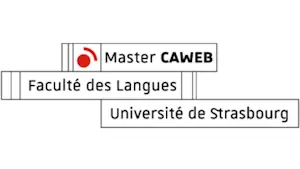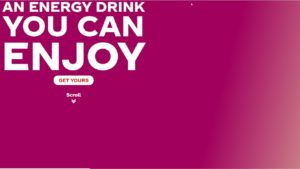Ecological Design
Nowadays, digital is part of our daily lives. We are all affected in one way or another by this technology. The younger generation cannot imagine life without the Internet or WiFi-equppied smartphones. Search engines, or networks, are constantly evolving and improving. However, as the idea of designing greener buildings and reducing energy consumption in big cities is omnipresent, the question arises when it comes to ecological design.
How to Create More Eco-Friendly Websites?

In 2019, the World Wide Web, launched by Tim Berners-Lee in 1989, proudly celebrated its 30th anniversary. “In 2019, we are connected for an average of six hours a day. The most visited sites are Google, YouTube and Facebook, which claim 2.3 billion active users. Three pornographic sites are also in the top 20. But the most common use is to browse commercial sites. Nine out of ten people visit them every month. As a result, e-commerce is worth 60 trillion dollars in 2019, according to UN figures. That’s three times more than the GDP of the United States. (Translated from French)” [1]
According to Frédéric Bordage, author of the book “Eco-conception web: les 115 bonnes pratiques: Doper son site et réduire son empreinte écologique” (“Web Eco-Design: 115 Good Practices: Boosting Your Site and Reducing Your Ecological Footprint”), the environmental footprint of websites is skyrocketing. In order to reduce their ecological impact and improve their performance, there are a number of good practices to implement when designing a website:
- A green web hosting-provider
- Clean technical development
- Sleek design and concept
Hosting in Ecological Design
There are more and more green hosting providers on the market today. For example, in the United States, AISO is the first company to own a data center powered entirely by solar energy. In France, the company Ikoula has entered the “green” race by establishing a contract with the French electricity supplier “EDF” to only use electricity generated by renewable energies. Over the years and as a result of technical progress, the production cost of green energy is decreasing, making it more accessible. This is why it is now possible to make a more responsible and environmentally sustainable choice.
Development in Ecological Design
When we talk about technical development, this implies reducing the use of resources. It is therefore recommended to use a framework, limit the number of HTTP requests, and minify the code in CSS/JavaScript files. According to the study “Energy Efficiency Across Programming Languages”, conducted by six researchers from three Portuguese universities, some programming languages are greener than others. For developers concerned about digital pollution, here are the top 5 languages that consume less energy: C, Rust, C++, Ada and Java. On the other hand, there are much more voracious languages like Perl, Python, Jruby and Lua [2].
Numerous tools are available to developers to help them in their green efforts. “CSS Online!” allows you to keep only the main part of the CSS file used. There’s also “infowebmaster” which is meant to compress a JavaScript file. In other words, minifying a code allows both to increase the performance of the site and to make it lighter [3], therefore making it more ecological. In today’s digital world, the speed at which a website loads is very important : “In the era of 4G and fibre, we are less and less tolerant and patient when a page does not open in 2 or 3 seconds. Our level of expectation has increased over time. […] Mobile users are even more ruthless (Translated from the French) ” [4]. Therefore, due to a lack of optimization, a site that is beautiful but too slow will not even be consulted by Internet users.
Sleek Design and Concept
To create an eco-responsible website, conception and design play a deciding role and have a direct impact on energy consumption.
Ergonomics is a key step when designing a good website. According to Alain Wisner, a pioneer of ergonomics in France in the 1950s, ergonomics is based on “the application of scientific knowledge about Man required to design tools, machines and devices that can be used with maximum comfort, safety and efficiency (Translated from the French)” [5]. An ergonomic site must therefore be efficient and have user-friendly interfaces. Among the golden rules given by web designers: simplicity and consistency are the key words for success. [6]
A website without unnecessary pages, irrelevant content, or useless buttons will naturally be greener than another non-optimized site.
Once the design of the website has been carefully thought out, the web designer will take care of all the graphics, animations, and typography.
When faced with larger projects, these steps can correspond to the User Experience (UX) in which “the search for balance between the different elements […] is able to meet a user’s specific needs (Translated from the French)” [7] and the User Interface (UI).
Written by Shu-Min Huang
Sources (cliquez
ici !)
Source [1]
Source [2]
Source [3]
Source [4]
Source [5]
Source [6]
Source [7]






